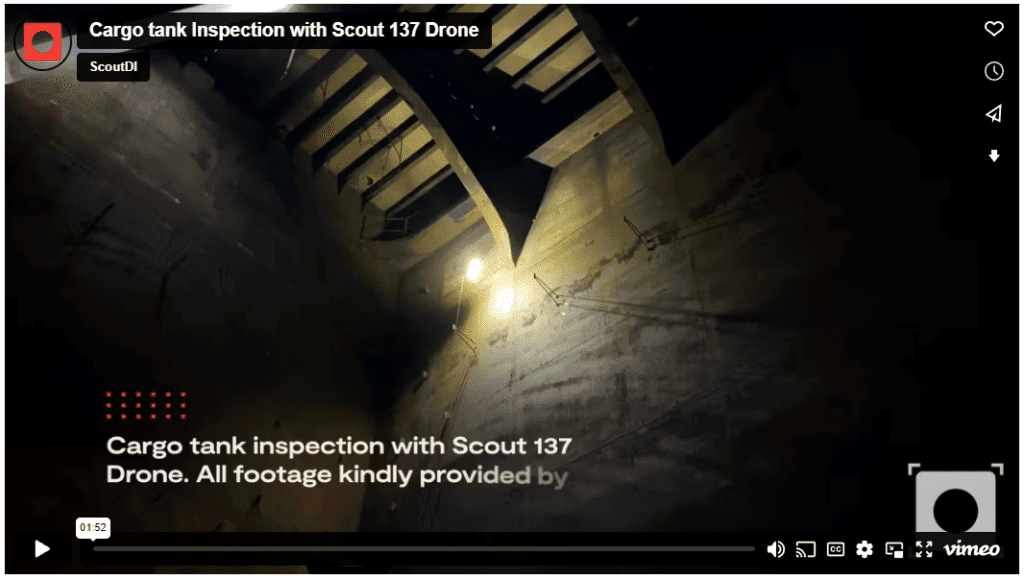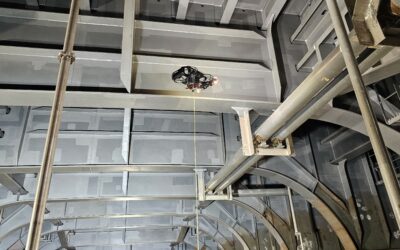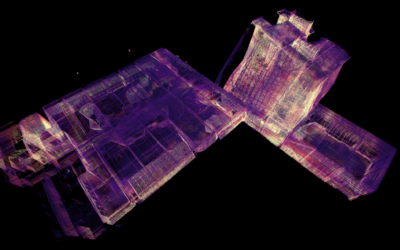The Scout 137 Drone can easily inspect structures that would otherwise require humans climbing with ropes or on scaffolding to get visual documentation. Scroll further to see compelling visual evidence why drone inspection is an exceptionally good idea in many cases.
The photos below are courtesy of Marine Inspection Services, leading experts in visual surveying and non-destructive testing (NDT) of ships and offshore installations. If you want to read the full “Cargo Tank Inspection” story and watch the video, you can do that here👍
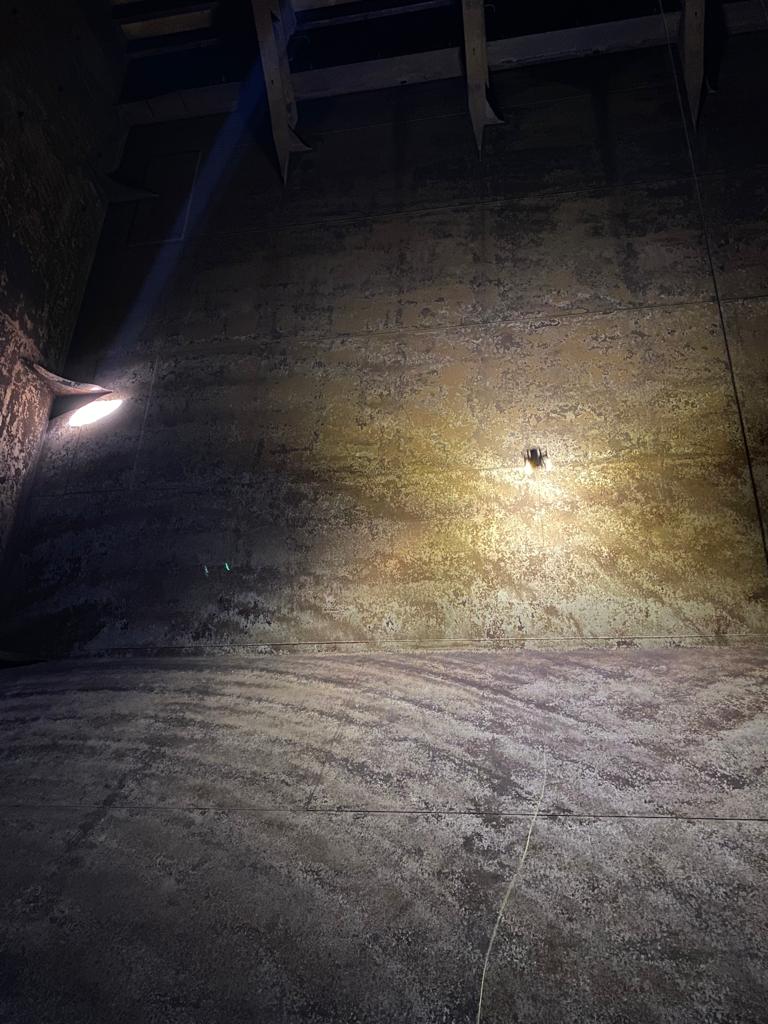
A perfect habitat for the Scout 137 Drone: This is a cargo tank on an oil tanker, seen from the inside. The tank itself is approximately 20 m tall, 20 m across and 27 m long. Of course, an oil tanker has several such tanks onboard.
Structural integrity assessments of these vast spaces traditionally involves humans working at height, often using ropes, ladders or scaffolding. There can be little or no light and in some cases limited access to fresh air. It is dangerous and tiring work.
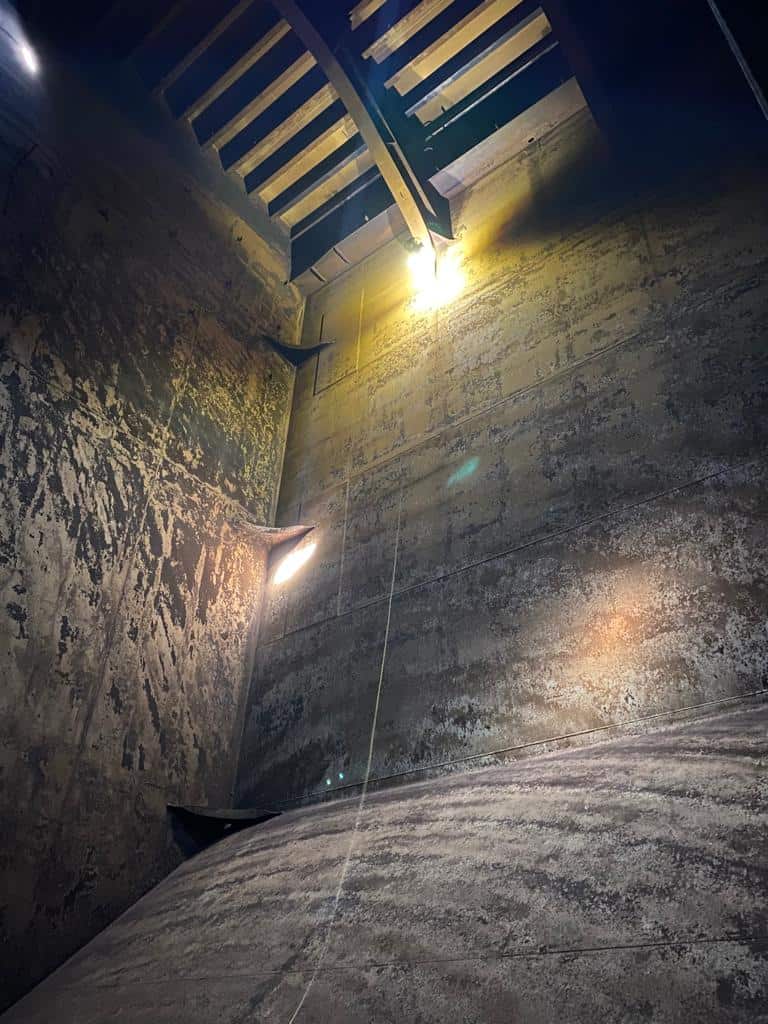
Unless you have a drone, that is. The Scout 137 can easily reach such heights and provide visual documentation in the form of 4K video and photos. Imagine climbing up there on a rope, with a camera and trying to take photos when you see something noteworthy. Not easy, it requires lots of training and experience and is still dangerous.
With a drone, 100% high-quality video coverage is perfectly viable. And it is much faster.
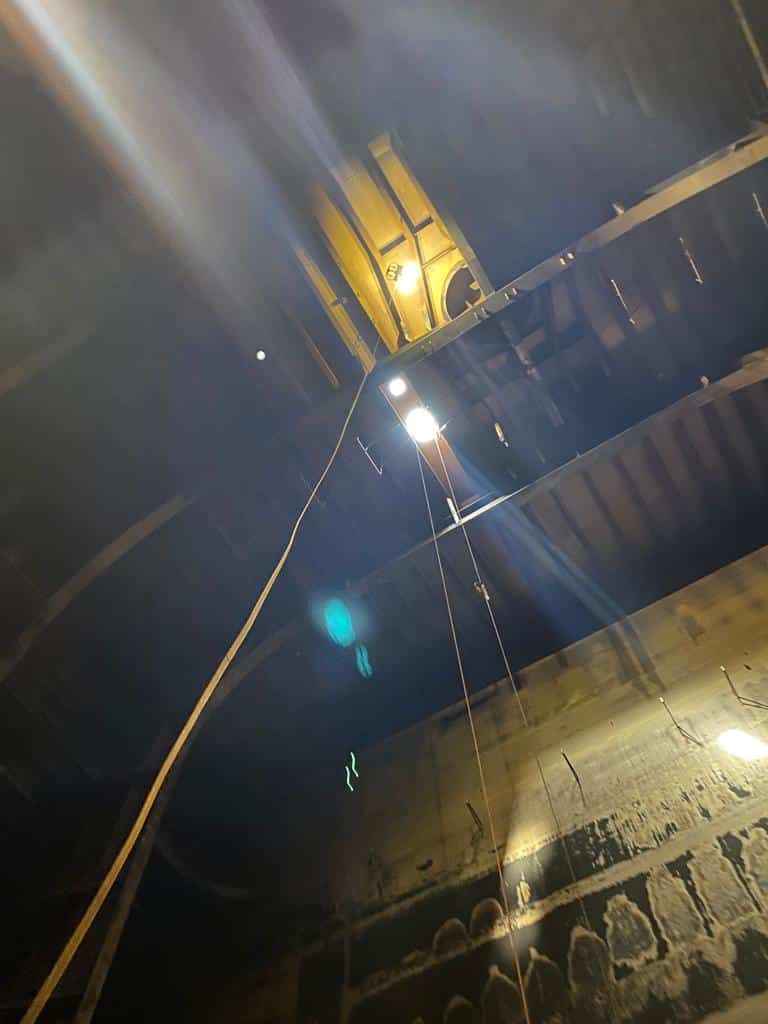
The Scout 137 Drone has a tether that provides power, control signals and a data network to the drone via the Ground Station.
This provides unlimited flight time and no loss of control signals, even inside full metal enclosures like this. The tether also provides a robust data network for the drone. If the Ground Station is connected to the internet, you can stream the inspection live to the Scout Portal.
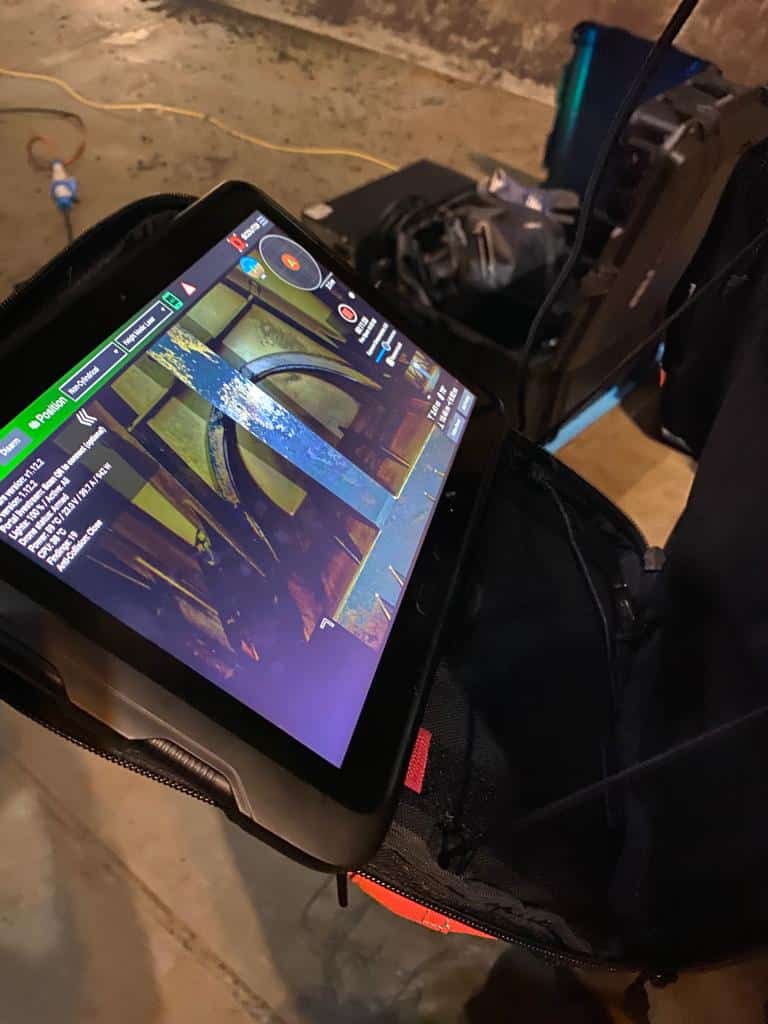
In this case, the pilot performs the inspection from the tank floor. The crane pedestal structure from the previous photo is here seen close-up on the tablet screen. This is a critical item to inspect closely, since cracking is a common problem.
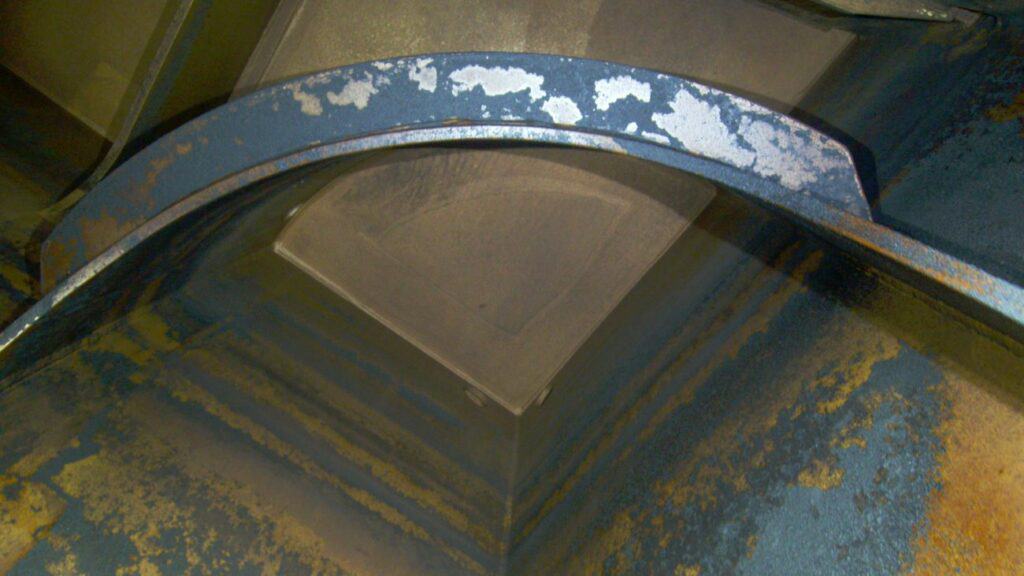
The above photo is the first-person view of the same crane pedestal structure, as seen from the drone approximately 20 m above the tank floor.
Because of the 3D LiDAR sensor, inspection can also be done without entering the tank, or BVLOS (Beyond Visual Line Of Sight). Scout 137 users also enter the tank from the top and perform the inspection standing on stringer levels. This is a handy option especially if the tank floor is covered with sediments or dust.
Stringer levels are the railed, horizontal and longitudinal features seen in the next photo.
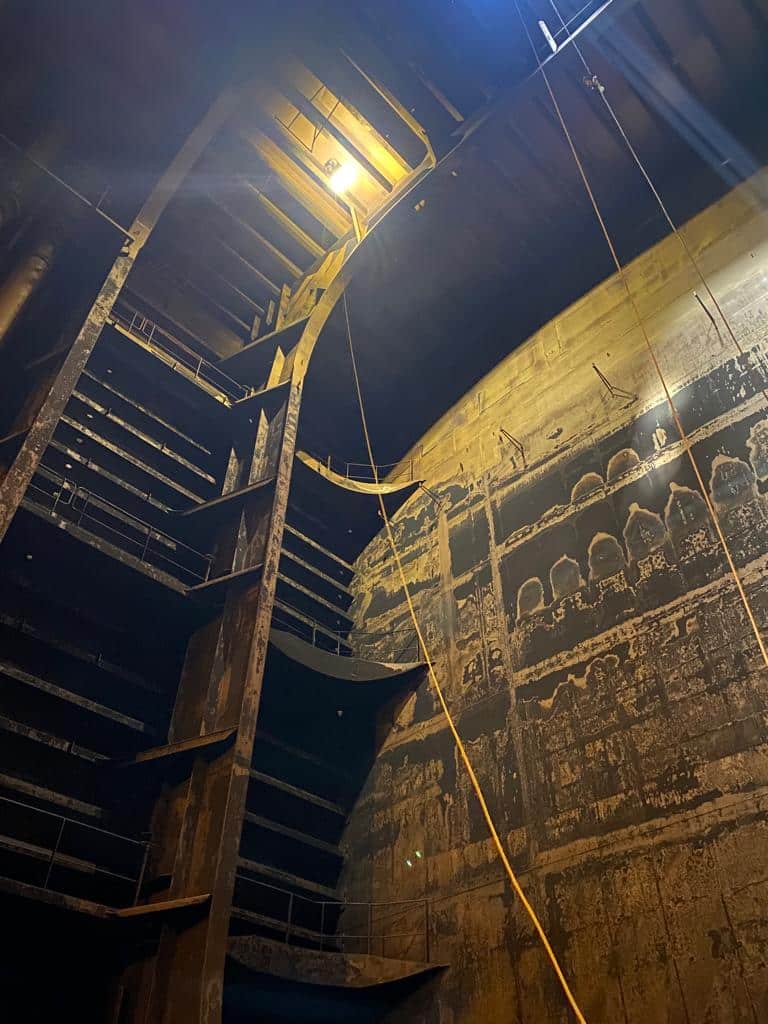
Providing situational awareness when flying BVLOS, the 3D LiDAR also feeds the drone’s position- , navigation and anti-collision system. It is the corner stone of the Scout 137’s autonomy path.
Of course, all inspection data from the Scout 137 is location-tagged.
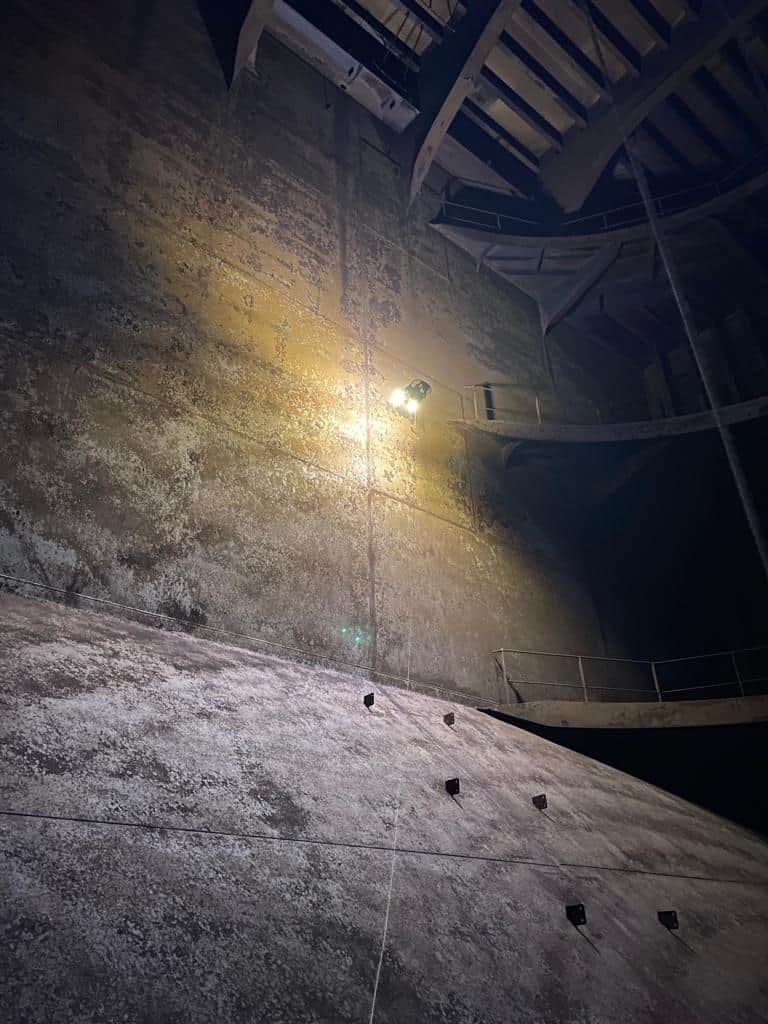
The Scout 137 Drone brings its own light to ensure good visual documentation in places with no ambient light available. With more than 10 000 lm available it is a self-sufficient visual data collector.
The lights can be dimmed and set in different configurations to optimize the chances of detecting very tiny structural features, for example a crack in a welding seam. The camera needs to have good spatial resolution at a nice and safe working distance for the drone. You can read more about how to get the best footage from your drone inspection here.
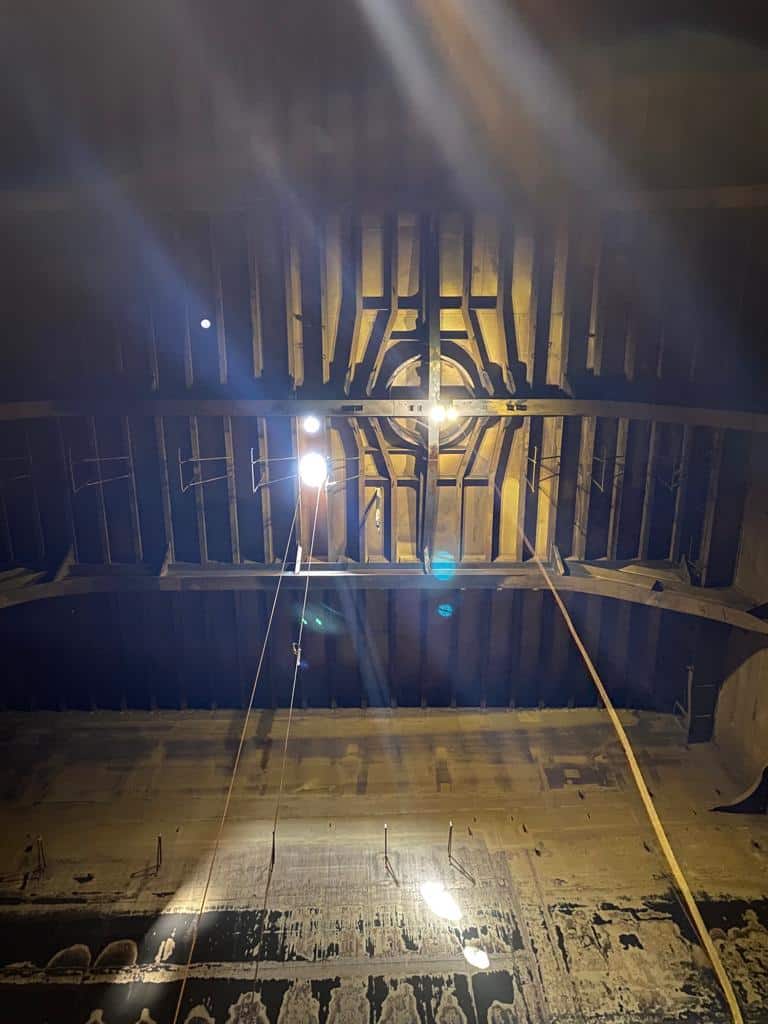
The camera gimbal of the Scout 137 can be tilted ±90°. The drone body is always horizontal when flying, but this allows coverage also of floors and ceilings. It is also handy when launching and retrieving the drone by hand into a confined space.
In this case, it makes inspecting the tank deck easy. Full coverage is ensured by flying zig-zag across the underside.
If you want to read the full “Cargo Tank Inspection” story and watch the video, you can do that here👍
Learn more about the Scout 137 Drone System here.
